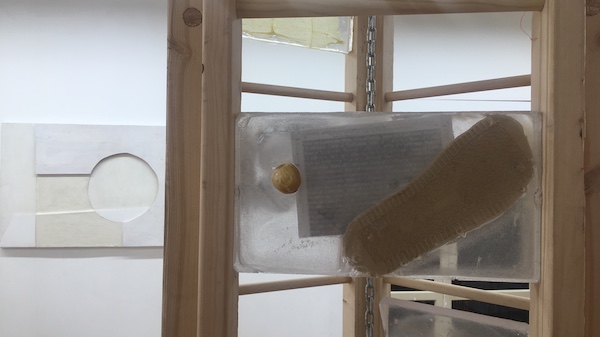This past Saturday there were an exciting array of openings to attend, but top on my list was in lieu gallery’s opening “Body remnants, and other impressions.” The exhibition organized by Kate Eringer featured work by Jack C. Baker, Alice Jacobs, Bennet Schlesinger, Pauline Shaw and Katie Sinnott. Despite living right around the corner, I had never made it to an opening at in lieu, so the intrigue was high and I was excited to check out the local space.
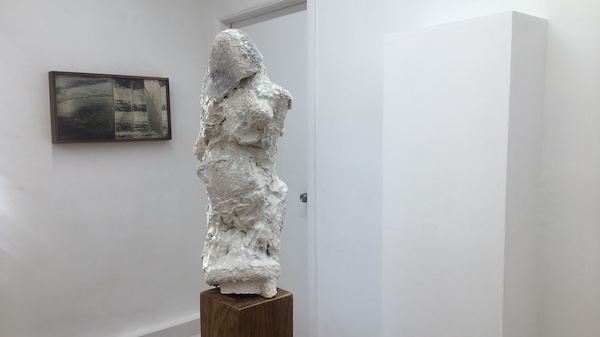
Installation view, “Body remnants, and other impressions”
Nestled in an unassuming nook of a larger industrial building, I found the entrance and walked up the narrow staircase to the space. Although quaint, I was pleasantly surprised at the beautifully lit gallery and was immediately aware of the professionalism of the exhibition. The crowd mingled, as many of the artist’s friends were present as well as two out three of in lieu’s founders, Alex Perliter and Ethan Tate. I was thrilled to find the gallery alive and thriving with fresh and thought-provoking work, sadly often lost in the more established galleries of LA.
The majority of the show’s work was sculptural, which can be difficult to fluidity coexist when composed multiple artists, yet each piece held a conversation with the other in an elevated, yet seemingly effortless language. Eringer explained the inspiration for the show explored the concept that man was made from organic materials, but in turn, the work man creates is inherently synthetic. I reflected on this as I digested the show, initially intrigued with the display as a whole, but became even more delighted as I spent time with each work.
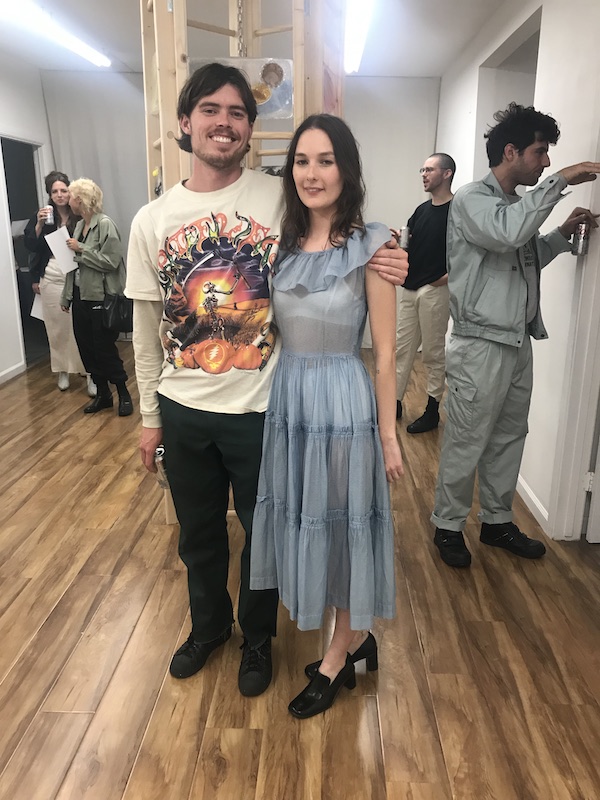
Jack C. Baker and Alice Jacobs.
First I approached a piece positioned in the center of the gallery, its form reminiscent of a ladder. Titled Framework, by Jack C. Baker the work was composed of wood ladder, but some rungs existed as chunks of resin. The resin forms encased a various array of random articles from the artists’ daily life. In some there were remnants of old snacks and strands of copper wires from speaker cables, while others contents were unidentifiable. Contained in the determined form of resin and on display, these elements of daily life became more than just external waste, but a visual narrative of the artist himself—elevating them into something precious.
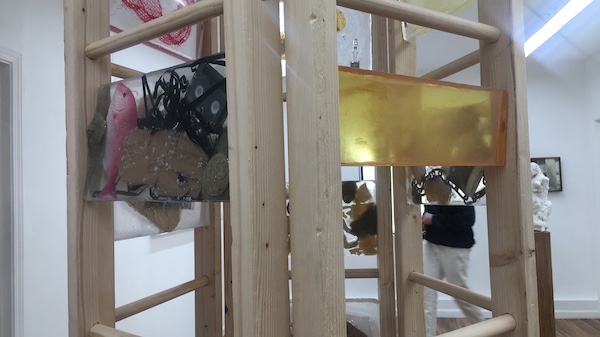
Jack C. Baker, “Framework” (detail)
One of the more subtle works was Katie Sinnott’s wood panel pieces. Emerging from the walls and hung in the form of paintings, their 3D surfaces and off white tones created delicate shadow and form, giving them a sculptural quality. Each creation hinted at the tenderness of hand in which the artist gave it form, evoking an intimacy I don’t commonly receive from sculptural works.
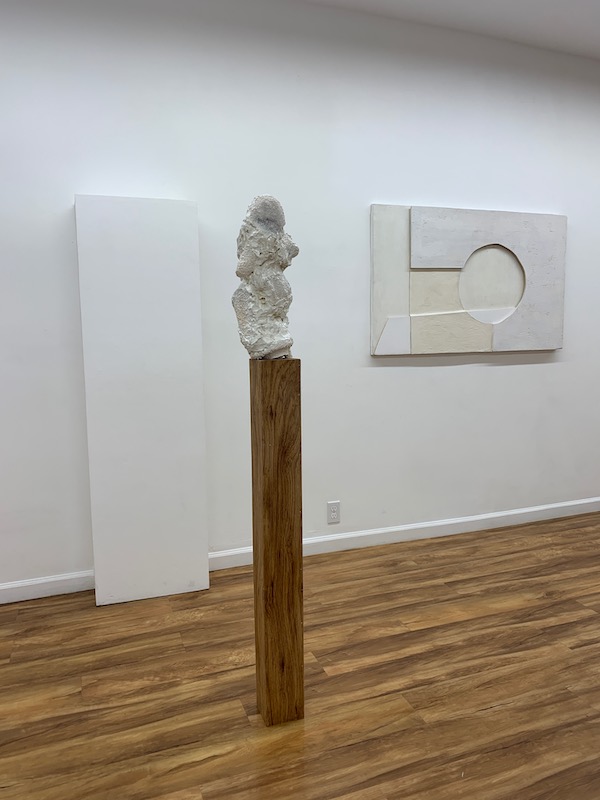
Installation view, “Body remnants, and other impressions”
Not solely composed of objects, the show expanded into preformative work as well such as an immersive installation by Alice Jacobs, which featured a room with glass doors. Inside the room was wallpapered with a repetitive image of the artist where her back is to us and her body is chained to a metal beam. During the show, the artist entered the room and steamed the windows, fogging up the glass and obscuring the view as the wallpaper peeled off. Like artist in the images displayed, we are inherently chained to our natural forms, and although always present, this contact often fades.
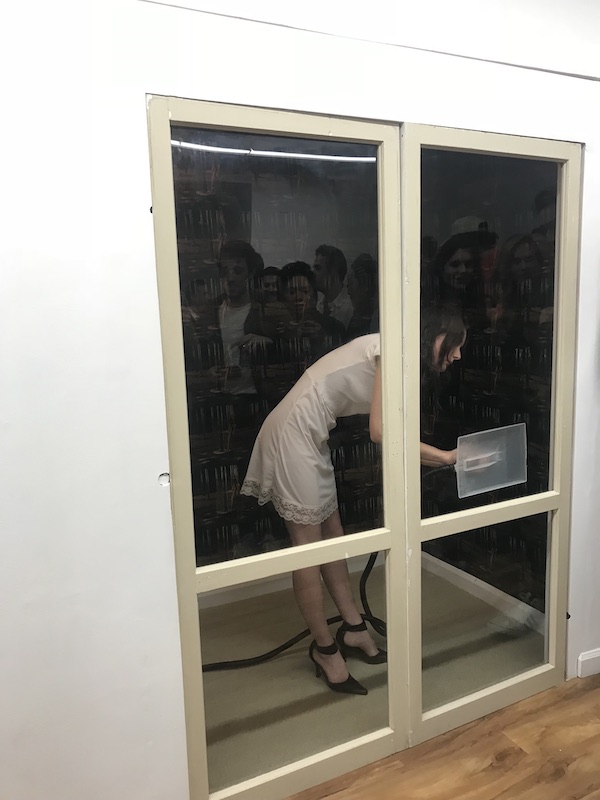
Alice Jacobs performance.
As I drove to my next gallery stop I was left reflecting that as artists, our work is an extension of internal musings, yet once we manifest these pieces of ourselves into form, they become synthetic. Our hands may be natural, but in the end, nothing we create ever will be. This realization of constant departure from authenticity is perhaps the driving force of the creator in all of us, the desire to return to that which is natural. Granted this is a cyclical and impossible question to answer, but thank you to in lieu for leaving me with something compelling to examine–and now you all can too.
.

